
Letters: Herzliche Glückwünsche, Anthony!
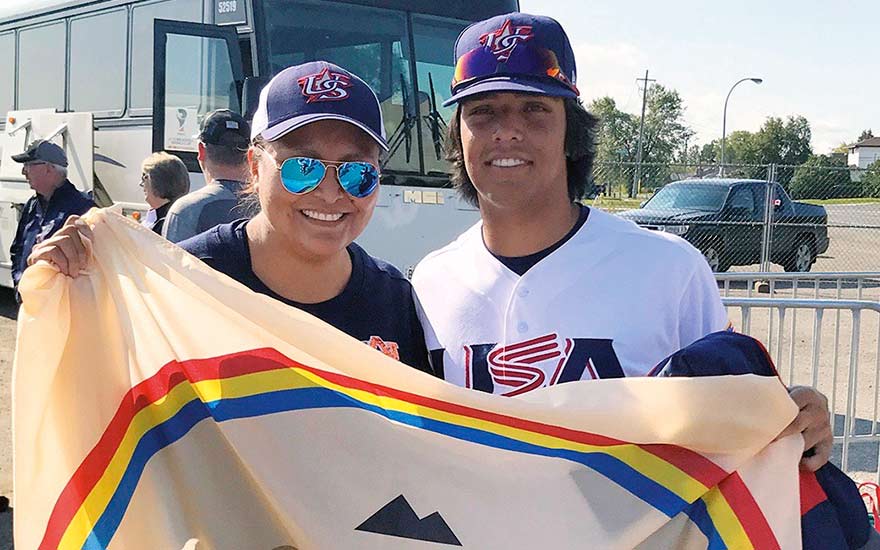
Courtesy photo
Anthony Seigler and his mother Alysia Seigler poses with the Navajo Nation flag after playing a game for Team USA, a team that won the 18-and-under World Cup in 2017. In June, Seigler was the New York Yankees’ top pick during the 2018 Major League Baseball draft.
Sehr Gut! Jawohl! (Very Good! Of course!)
A German-speaking Dineh for Dineh Nation president? It sure didn’t happen in 1990 when Joe Shirley and I were two of 14 candidates — nein, Shirley spricht nicht Deutsch. But in 2018, two Dineh Yankees! First, Herr Jacoby Ellsbury (Tacheeni Clan), now Herr Anthony Seigler.
Now, if Herr Seigler is Tacheeni also, Wunderbar! (Wonderful!!) “Totally Navajo (Dineh)” (front page, Navajo Times, June 14, 2018).
The points already made are the two Dineh Yankees have German fathers. Personally, I have always been a Yankee hater — why? I have been a Cleveland Indian fan since 1952 —even when Allie Reynolds (Choctaw) was pitching for The Bronx Bombers.
But that was before 2006, when Jacoby as a rookie became one of two major leaguers to hit two doubles in one inning in a World Series game. I witnessed it — and videotaped it — at Coors Field, Denver, in the second inning of the second game of the 2006 World Series. I was there with my wife as our daughter had bought World Series tickets for us when the Indians had the Boston Red Sox down three games to one in the American League Finals.
She asked, “Are you sure the Indians will be playing the Colorado Rockies in the WR?” I said, “Of course — Jawohl! The Indians have three more games to win just one more.”
Just like 1990, it never happened. Since then, however, whenever the Indians play the Yankees I want all the Yankees to strike out — except Jacoby, my nephew. I want Jacoby to hit a home run every time he comes to bat as a leftie. History will tell that Jacoby did exactly that in the 11th inning in a game at Progressive Field in Cleveland, July 2018. The Yankees won 1-0 in Cleveland, yeah.
In 2018, I am starting to become somewhat of a part-time Yankee fan because now there will be a Dineh calling for the pitches from “behind the dish.”
I sure hope Herr Seigler does well in spring training 2019 so they can move him to Yankee Stadium in the Bronx in 2019.
Herr Tacheeni Scott
Flagstaff, Ariz.
NCAI report provides reality check
The National Congress of American Indians released their annual “Policy Update” report at the 2017 Annual Convention in Milwaukee, Wisconsin, emphasizing the dire urgent need for Native peoples to exercise their rightful voice to impact challenges that Native peoples confront daily.
Native peoples must have “… a strong voice and advocacy strategy on those issues that impact our tribal communities. It takes all of us —tribal nations, NCAI, our regional partners, issue organizations, and members to ensure that tribal priorities are advanced at the tribal, federal, state and local level.” With the rapidly evolving global knowledge-based economy as a point of reference, the sharing of quality-of-life information on our people is a public good.
The life conditions of our Native peoples matter, the dire consequences of unequal concentration and unfair deliberate allocation of economic resources. Such public health human cost social-cost data provides a reality check on the everyday lives of Native peoples both within and in off Native reserve lands, the social-cost statistics, which happens to be us.
Elections are held to govern and improve the quality of life for all people regardless of age, ethnicity, gender, and national origin. If we would but take a look around, elections have come and gone along with all the rhetoric and unfortunately it appears with little in way of accountability, accomplishments, and transparency.
Times are changing with voters seeking the dire need to drown out political rhetoric that has and continues to plague and sustain a landscape of social and economic hardship for our people. While more and more Navajo Nation voters may have joined the “What’s the use?” platform, there is still hope that there may be a candidate willing to step forth to take on a new outlook toward transparency and accountability for unacceptable life conditions of our people.
There are very important jagged groundwork questions political office seekers need to articulate, key compass cardinal points on how they will reduce the seemingly permanent high Navajo Nation unemployment rate, how they will assist our struggling K-16 education system, how they will assist hospitals to improve health care, how they will work to improve our imperiled communities in real time, in real setting, with real people.
The deeply flawed political rhetorical process that has characterized past elections amounting to massive policy failure needs to be put to rest. As election time draws near, it is worth keeping in mind that retaining the name of a sovereign Navajo Nation as currently defined is inconsistent with the integrity of a true sovereign governance.
While citizens of a town, municipality, county, state, and federal government enjoy the benefits of laws legislated on their terms, Native peoples in Native reserve lands remain stymied by laws legislated in the last century that are counter to the interest and well-being of a new generation. It would help voters to see which office seekers are practicing, experienced leaders with a successful track record, going the distance on implementing actionable, realistic, viable plans toward a true sovereign governance, a sovereign nation.
The NCAI offers some invaluable insights and policy recommendations regarding realistic parameters of sovereignty that in turn can translate into viable socio-demographic and economic tide to lift all boats.
To overcome concentrated socioeconomic hardship that is rigged from the start and still to date is not for everyone to try and improve. To overcome a deeply ingrained harsh socioeconomic system takes hard, hard work, a hands-on applied education strengthened by character, honesty, ethics, integrity, industriousness, and leveraged by bedrock lessons from our traditions of self- and collective efficacy, that is, if it’s to be, it’s up to me.
If we’ve become callous to unjust, unequal laws that support endemic, searing life-conditions, we along with many others will just have endorsed once again an apartheid system in the U.S. that has been carefully engineered for Native peoples in governance, in economics, socially, educationally, and psychologically institutionalized since the early 1600s.
How one cannot be affected by this quiet albatross with near sounds of silence that are too loud to not hear is inexcusable in this day and age. Only by being among our population in search of a better quality of life for all can one be affected by the silent communication for a better tomorrow. How the unbalanced concentration of wealth and economic resources must be balanced to benefit the Navajo Nation is a key jagged groundwork question to be answered by office seekers.
It could very well be that voters are looking for candidates who will articulate in Navajo and English how they intend to improve our unacceptable unemployment rate, housing needs and conditions, health care delivery, our roads, our struggling education system, the fledging private sector business investment, and job development for our current and future generations. There is no need for our Native peoples to take the brunt of the alarming increase in gender- and race-based socioeconomic inequality, the growing intransigent economic hardship nationally.
By mere zip code exposure effects on childbirth, ethnicity, skewed income, and education, our children and grandchildren should not have to be destined to repeat the cycle of the nation’s most persistent disenfranchised sociocultural language group in America.
Harold G. Begay
To’Nanees’ Dizi, Ariz.
Court agrees with allotment owners
Many of us who left our homeland still remember it as clearly as if we heard it yesterday: The echoes of “Get a higher education and bring that knowledge home.” Many who heard those echoes from their parents and Diné leaders reacted positively because they have also heard, “The government have been running all over us for many years (Waashindoon t’óó nihik’i naajeehgo díkwííshii nááhai) and I wish as an invisible as you make me feel.”
Sept. 9, 2010, I also reacted along with 50 Allotment Number 2073 landowners and a number of outside caring professionals by challenging BIA Navajo Region acting regional director’s decision for obtaining owner consent as defective and that the compensation paid for the right-of-way is far less than the value of the Western Refining Southwest Inc. rights of way. “Chump change.”
Chief administrative law judge of the United States, Interior Board of Indian Appeals order ruled in favor of the 2073 landowners stating BIA erred in not following the federal regulations in the renewal of Western’s rights of way across Allotment Number 2073. Our story began after the IBIA decision, which made it possible to appear in the book titled “American Apartheid”, written by investigative reporter Stephanie Woodard of New York. August 2017, our story got the Best Coverage of Native America award from the Native American Journalists’ Association.
Thanks go to “In These Times” and reporter Stephanie Woodard for a job well done. Readers will see that conflict of interest and malfeasance is apparent in the Western and BIA coyotes’ attacks on my relatives and other Native landowners, described throughout the article.
None of this is our fault; we were dragged into it by BIA incompetence and corruption. This is why we fight.
The Navajo Nation deserves criticism as well. It could have come to the aid of its tribal members, because it owns a small percentage of our allotment, acquired through one of the buybacks described in the story. However, it is not doing so, which has negative implications for its sovereignty and treaty rights.
These are especially threatened by Western’s frivolous lawsuits, attempting to condemn our land, as well as against the Interior Department Our land is essential to our sovereign and who we are. It holds the bones of our ancestors.
Patrick Adakai
Tijeras, N.M.
NGS lawsuit costly, frivolous
Why does Peabody Energy want to hang onto the coal leases with Hopi and Navajo nations? This is my opinion. In 1909, the U.S. Geological Survey gathered data on the Black Mesa coalfield, estimating that it contained eight billion short tons of recoverable coal. Later, the Arizona Bureau of Mines estimated that as much as 21 billion short tons of coal lay beneath Black Mesa (source: Summary of Cretaceous Stratigraphy and Coal Distribution, Black Mesa Basin, Arizona).
Hopi Tribe conducted its own study of coal underlying the Hopi Partitioned Lands outside the coal lease area. The study concluded 1 to 1.5 billion tons of coal south of the existing Kayenta and Black Mesa Mine Complex. This will meet Arizona’s coal usage for up to 100 years, not including the coal already leased for use at Navajo Generating Station. This opening of the coal reserves could meet the need of existing Arizona’s coal-fired plants for 100 years or more (source: ICF International, consultant to the Hopi Tribe).
The amount of economically mineable coal in the Peabody lease area and outside is worth trillions of dollars. I suspect Peabody used its right to mine coal on Black Mesa to get out and stay out of bankruptcy. Regrettably, the Hopi Tribal Council without the knowledge and approval from villages joined Peabody in a lawsuit to require Central Arizona Water Conservation District to keep buying power from NGS thereby continuing the most destructive mining operation, which has been going on for 48 years.
The lawsuit, in my opinion, is futile, and a waste of tribal funds that is needed to run the Hopi tribal and village governments. Peabody has historically used the Hopi Tribe to get what it wants with consent from the Office of Surface Mining, an agency under the Department of Interior, that has sole regulatory authority over Peabody mining. OSM has always treated Peabody like a special customer. Trying to keep NGS and mining open will not be easy.
Several things have to be done: 1. NGS purchase agreement between a new owner or owners of NGS has to be done. So far, one company has expressed interest, but no firm commitment to purchase the generating station. 2. If an agreement is reached, the new company will file an application with U.S. Department of Interior Secretary to operate NGS beyond 2019. 3. The Environmental Assessment or Environmental Impact Study will begin.
The public will be asked to participate in the scoping process to be determine what should be studied. 4. At the end of the study, a decision to approve or deny the application will be issued for public comment. If BMT and other non-government parties disagree with the decision, we will challenge the decision in Federal Administrative Court.
By the time all this is done, the coal lease between Peabody Energy and Hopi Tribe will expire five years from now. I’m certain Peabody will ask for a lease extension.
A decision by Hopi Tribal Council to extend the coal lease will no longer be done without the approval of Hopi-Tewa independent villages. Instead of spending time and money on frivolous lawsuits to please Peabody, NGS employees and Peabody mine workers (no Hopi works at NGS and less than a dozen at the mine) the chairman should convene an economic summit.
Invite the Hopi and Tewa Sinom to present their ideas on how the Hopi Tribe can achieve economic independence and end their dependence on Peabody, a company store that owns our soul.
Black Mesa Trust has publicly proposed two ways the Hopi Tribe can replace monies coming from Peabody and NGS, which is only less than $7 million per year.
1. Enact a Possessory and Business Activity Tax Ordinance. It will be a tax on outside companies profiting from doing business on our land. The Hopi-owned businesses will be exempt.
2. Construction of a 20-plus megawatt Hopi Solar I on HPL that has been mined out and reclaimed. Potential buyers of electricity from Solar I include Navajo Tribal Utility Authority, Western Area Power Administration, Salt River Project, Arizona Public Service Co., and CAWCD.
If the Hopi Tribal Council approves construction of Hopi Solar I, the solar generating station can be delivering power in less than three years. It will give Hopi experience to construct future solar projects and train Hopi workers to construct and manage the enterprise. It will end our dependence on coal and abuse of our drinking water and prevent further destruction of our ancestral villages and burial sites.
Vernon Masayesva
Kykotsmovi, Ariz.
Vote Benally; she gets it done
As a Utah Navajo, I have one thing to say: San Juan County Commissioner Rebecca Benally worked hard to earn my respect and vote. Like most Utah Navajo, I come from a working-class family. My father and my mother have provided me a proper upbringing.
My family goes back generations of being proud Utah Navajo people. Strong ties to the little strip of land into which the Navajo Nation extends. For years I’ve seen a decline in leadership for the Utah Navajo area.
Past leaders have simply used and abused their leadership roles for short gain and making a quick buck. One thing they seem to forget is that we elected them to serve, not to just sit back and collect a guaranteed paycheck for four years. I’ve seen a declining interest in improving our roads for school kids, a decline in interest in providing jobs, a decline in buildings for new businesses, and a decline in interest to even build homes for grandma and grandpa.
Living in Utah all my life I’d have to say that these are important basic needs a community needs to grow, something our past leaders all but gave up on.
Drastic change was needed, so in the 2014 election we decided to stop this madness. We elected someone from among the people to finally serve the people. We elected my former Montezuma Creek Elementary school principal, Rebecca Benally.
In the time she’s has been our commissioner, she has been very transparent. She has been to every Utah Navajo chapter house to attend meetings, carrying our voice and concerns back to her position and made the changes our people and communities need. She has been to the state capitol and beyond carrying our concerns and wishes.
I have seen her make the case before the Utah state legislative leaders to successfully reopen and unfreeze the much-needed Utah Navajo Trust Fund, which has seen successes beyond our wildest dreams. It was unacceptable that keeping those needed resources away from the Utah Navajo people was ever “business as usual” in the eyes of past leaders.
The UNTF has gone on to provide essential funding for new home construction, electricity where none was before, projects for running water, help fund road improvement proposals in the Mexican Water area, and pave the way for a much-needed elementary school (90 percent Navajo students) to be built in Bluff, Utah, with the blessing of Utah Navajo chapter approvals.
Commissioner Benally reorganized the SJ County economic development office, which has since brought in businesses like Family Dollar to Montezuma Creek. It may not seem like much to anyone living outside of the area, but for us not having to spend hundreds of dollars in fuel, this greatly helps. Commissioner Benally has improved roads for our school kids.
Bus routes and routes for our daily commutes. Highway 162 between Montezuma Creek and Aneth was fixed, and county roads, which are lifelines for medical access for our Navajo elders, were improved.
These improvements were not easy to accomplish – years of planning and collaboration. Everything she does in her elected position is on our behalf as Navajos of San Juan County, Utah. Everything she has done for our community before we elected her was always on our behalf. I never cared what outsiders say, her actions say otherwise. If there ever was an agenda the commissioner followed, then it always was from the people’s concerns and basic needs.
We influence her decisions, we provide the direction her leadership role must follow, we, the people. This basic reason is why we have great respect for Commissioner Rebecca Benally. She actually listens and gets things done. This basic reason is why we want to see her continue on as our San Juan County commissioner here in Utah.
Timorie Harvey
Aneth, Utah
Track Congress’s attacks on earth justice
Because neither the Albuquerque Journal nor the Rio Rancho Observer will print a letter that I’ve written criticizing Donald Trump, an acquaintance of mine, who is Navajo, suggested that I send my letter to the Navajo Times. Refusal by the local newspapers to print my letter tells me that we are an oligarchy and no longer a democracy and are quickly losing all of our democratic rights. Instead of supporting freedom of speech, the news media, with the exception of PBS, reports on sensational news like “Stormy Daniels” and Trump’s tweets, not on what is really going on in our Congress.
If you’d like to track Congress’ attacks on justice and earth justice, go to https://earthjustice.org/features/legislative-attacks to see what Congress is doing without our knowledge. Please not only print my letter but also encourage people to take action to defend our rights by contacting your senators and representatives.
Carolyn A. Horne
Rio Rancho, N.M.
To read the full article, pick up your copy of the Navajo Times at your nearest newsstand Thursday mornings!
Are you a digital subscriber? Read the most recent three weeks of stories by logging in to your online account.

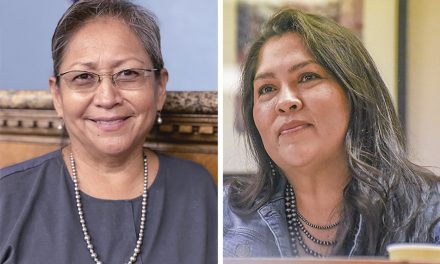
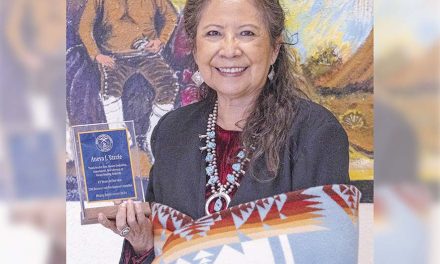

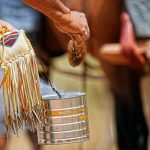
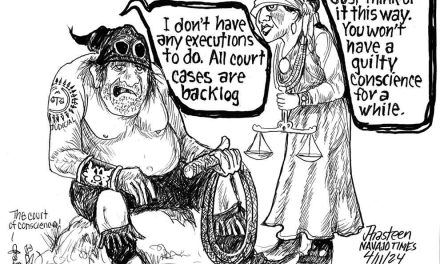

 Highway 264,
Highway 264, I-40, WB @ Winslow
I-40, WB @ Winslow